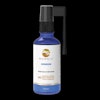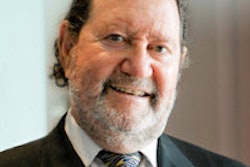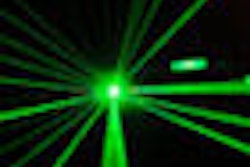
Diode lasers can significantly improve clinical parameters when used as an adjunct to scaling and root planing (SRP) during periodontal treatment, according to a new study in Lasers in Medical Science (November 16, 2012).
Laser treatment has been expected to serve as an alternative or adjunctive treatment to conventional mechanical therapy in periodontology due to several advantages: ablation of tissues together with effective hemostasis, removal of calculus and granulation tissue, and bacterial reduction in periodontal pockets, explained study author Mehmet Saglam, PhD, a faculty member at the department of periodontology at İzmir Kâtip Çelebi University in İzmir, Turkey, in a DrBicuspid.com interview.
To see whether a diode laser will enhance SRP treatment outcomes, Saglam and his colleagues conducted a randomized, controlled six-month clinical trial using a parallel design. They looked at 30 patients (18 men, 12 women) with chronic periodontitis who were referred for periodontal treatment at the department of periodontology at the Faculty of Dentistry of Selçuk University between January 2010 and July 2010.
“We observed satisfactory results ... but there is no guarantee to achieve satisfactory results every time.”
Study participants had at least 14 teeth with at least two teeth with 5 mm or greater probing depth at each quadrant. They were randomly assigned to two groups: one group (n = 15) served as the control and received only SRP, while the test group received SRP followed by diode laser treatment.
Exclusion criteria for the study included any periodontal treatment received during the past year, systemic diseases that could influence the outcome of the therapy, pregnancy, smoking, immunosuppressive chemotherapy, and use of antibiotics and anti-inflammatory drugs for the last six months.
Supragingival scaling was performed for each patient in all groups using hand instruments and ultrasonic devices. Full-mouth subgingival SRP under local anesthesia was performed in a single appointment for each patient in all groups using an ultrasonic scaler and hand instruments. SRP and diode laser therapy was performed in the same visit. All treatments were performed under local anesthesia.
Laser treatment was performed by using a 940-nm indium-gallium-aluminum phosphate (InGaAIP) diode laser. Plaque index, gingival index, bleeding on probing, probing depth, and clinical attachment level were measured at baseline and at one, three, and six months after treatment.
The gingival crevicular fluid levels of interleukin-1 beta (IL-1β), interleukin-6 (IL-6), interleukin-8 (IL-8), matrix metalloproteinase-1 (MMP-1), matrix metalloproteinase-8 (MMP-8), and tissue inhibitor matrix metalloproteinase-1 (TIMP-1) were analyzed by enzyme-linked immunosorbent assay.
Here are some of the key results:
The test group showed a significantly better outcome compared with the control group in full-mouth clinical parameters.
MMP-1, MMP-8, and TIMP-1 showed significant differences between groups after treatment compared with baseline. The total amount of IL-1β, IL-6, MMP-1, MMP-8, and TIMP-1 decreased and IL-8 increased after treatment in both test and control groups.
The diode laser provided significant improvements in clinical parameters, and MMP-8 was significantly impacted by the adjunctive laser treatment at the first month.
"The literature does not show any standard procedures regarding energy, modes of irradiation, and time taken for bacterial reduction in the periodontal pocket," Saglam explained. "You can observe different results due to type of laser device (Er:YAG, Er:YSGG, Nd:YAG, CO2 laser, and diode), modes of irradiation, application time, diameter of laser fiber tip, and using cooling system."
He and his colleagues used a diode laser (power: 1.5 W, pulse interval: 20 msec, pulse length: 20 msec, 20 s/cm2, 15 Joules/cm2) for decontamination of the periodontal pocket and once with the root planing procedure, he added.
"In some periodontal diseases, you can't achieve the results that you hope," Saglam said. "Inaccessible areas for hand instruments in the mouth, specific periodontal microorganisms which can invade gingival tissues and lead to reinfection of periodontal pocket, and the presence of resistant bacteria to some antibiotics in periodontal pocket are some reasons of failure in nonsurgical periodontal treatment."
Correct selection of the dental laser device, modes of irradiation, application time, the diameter of the laser fiber tip, and frequency of application may help the clinicians to get better results in treating periodontal disease, he added.
"We observed satisfactory results by using diode laser," Saglam concluded. "But there is no guarantee to achieve satisfactory results in every time. We need more evidence to use dental lasers effectively in the treatment of periodontitis."



















